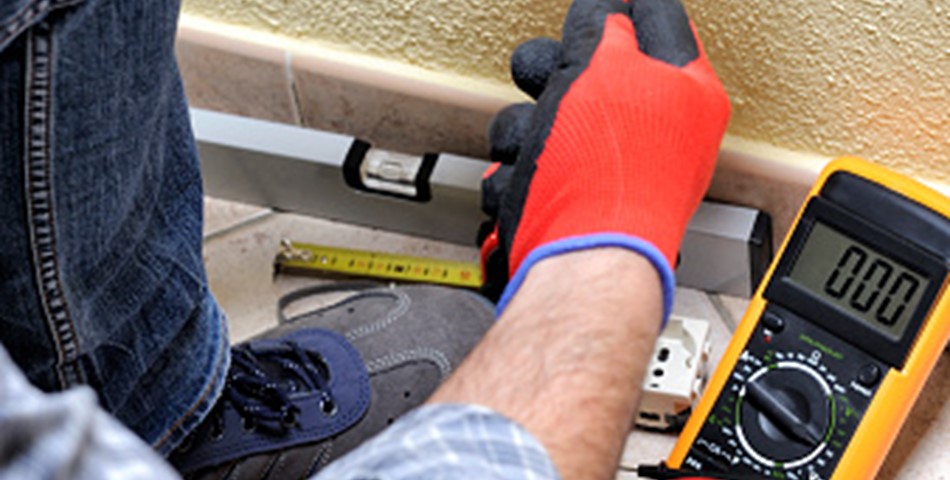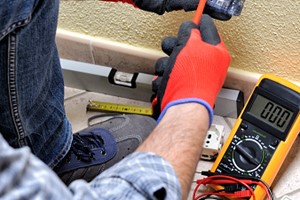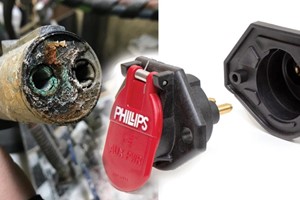If you're installing cables in buildings with drop ceilings and HVAC system – whether it's for a Wi-Fi network, signal booster, a distributed antenna system (DAS), or something else – understanding when you need plenum cables is critical.
Plenum-cable requirements exist in almost every building code in the US. They're there to protect occupants from potentially fatally hazardous fumes.
What are the different cable ratings and who rates them?
When we talk about plenum and non-plenum cable, we are not talking about the type of cable (coaxial, Cat5e/Cat6 ethernet, HDMI, etc.), but rather the fire resistance of the jacket (outer covering) around the cable.
In the United States, the National Fire Protection Association (NFPA) outlines the standards for electrical wiring in buildings in the National Electric Code (NEC).
Since NFPA’s primary purpose is to prevent fires, nearly all state governments and local bodies have adopted NEC guidelines as a key part of their building codes.
There are over fifteen levels of cable rating according to the NEC guidelines, but the three most common “Communications Multipurpose” (CM) cables you'll come across are:
- Plenum Rated (CMP) Cable
- Highest fire-resistance rating.
- Made from low-smoke PVC or FEP compounds.
- The only cable suitable for plenum spaces and air ducts.
- Most expensive.
- Riser Rated (CMR) Cable
- Lower fire resistance than CMP cable, but higher than CM cable.
- Can be used in risers.
- Sometimes called "PVC cable" because jacket is often made from inexpensive PVC compounds.
- Standard (CM) Cable
- Can be used in walls and beneath floors.
- Useful when the fire code does not have any restrictions on cable type.
- Often used for patch cords and jumpers.
When should you use plenum cable?
Most building codes mandate that only plenum-rated (CMP) cable be used in “plenum spaces” and air ducts.
For large public spaces like hospitals, schools, and airports, building codes in some cities and towns mandate plenum cable even for non-plenum spaces.
The most common plenum spaces are the open spaces above a drop ceiling or below the floor.
In most commercial buildings with HVAC systems, air ducts supply air from the external HVAC unit to the inside of the building, but the return air goes through the open space above the drop ceiling instead, making it a plenum space.
These spaces are essential for air circulation, but they pose a major fire hazard because of the high rate of airflow. If non-plenum plastic cable is used in this space, it will spread the fire faster and distribute thick toxic smoke throughout the building.
The goal here is to prevent fire from travelling along a cable and spreading throughout the building.
That’s where plenum-rated cable comes in.
Why use plenum rated cable?
Plenum rated (CMP) cable has an outer jacket made of fire-resistant material like Teflon to prevent fire from spreading.
When a fire happens, plenum rated cable is designed to:
- Restrict flame propagation to no more than five feet
- Limit the amount of harmful smoke released
- Self-extinguish
Why is using the right cable important?
If you use non-plenum cable in the plenum ceiling, inspectors won’t give you an occupancy or building permit, and you may be subject to fines.
Some residential buildings are never inspected. However, it’s still important to adhere to local codes. If there is a fire and you didn’t use the right cable, you can be held liable for negligence and unable to claim insurance.
How do you know if a cable is plenum rated?
In the US, Underwriter’s Laboratories (UL) is the de facto body entrusted with the certification of cables. If the plenum rated cable carries a UL trademark marking and an approval number that can be verified on UL’s website, you’re good to go.
Some cables meet the plenum-rated standard, but aren’t UL listed. Depending on your jurisdiction, you may need to simply show that your cable is plenum-rated. In some stricter jurisdictions, you may need to show that the cable is UL listed as well.
The following coax cables are UL listed plenum-rated:
- Ventev TWS-400-P
- Times Microwave LMR-400-LLPL
- Times Microwave LMR-600-LLPL
- Wilson 400 Plenum Cable
- Commscope Heliax AL4RPV
The following cables meet plenum-rating specifications, but are not UL listed:
- RSRF RS400-PL Plenum Cable
UL-listed cable should generally be marked with the UL trademark marking and approval number, which you can use to look up the cable online for free.
When can you use non-plenum rated (CMR or CM) cable?
Non-plenum cables can be used anywhere except plenum space and air ducts.
In both commercial and residential buildings, non-plenum cable can be used to run cables through walls and across open ceilings. You must use CMR (riser-rated) cable when running cable between floors through risers or vertical shafts.
Some buildings with HVAC systems have return air ducts which transport air back outdoors. If there are no leakages and the space above a drop ceiling is not circulating air, you may use non-plenum cable. Of course, this is only true as long as the cable is not running inside the air ducts themselves.
Using CMR or CM cable offers a significant cost saving because it generally costs half or a third as much as CMP cable.
But, before you go ahead, check with your insurance provider and local area building code. Some insurance providers and building codes require plenum cable even for non-plenum spaces depending on factors like building height, purpose, and occupancy.













